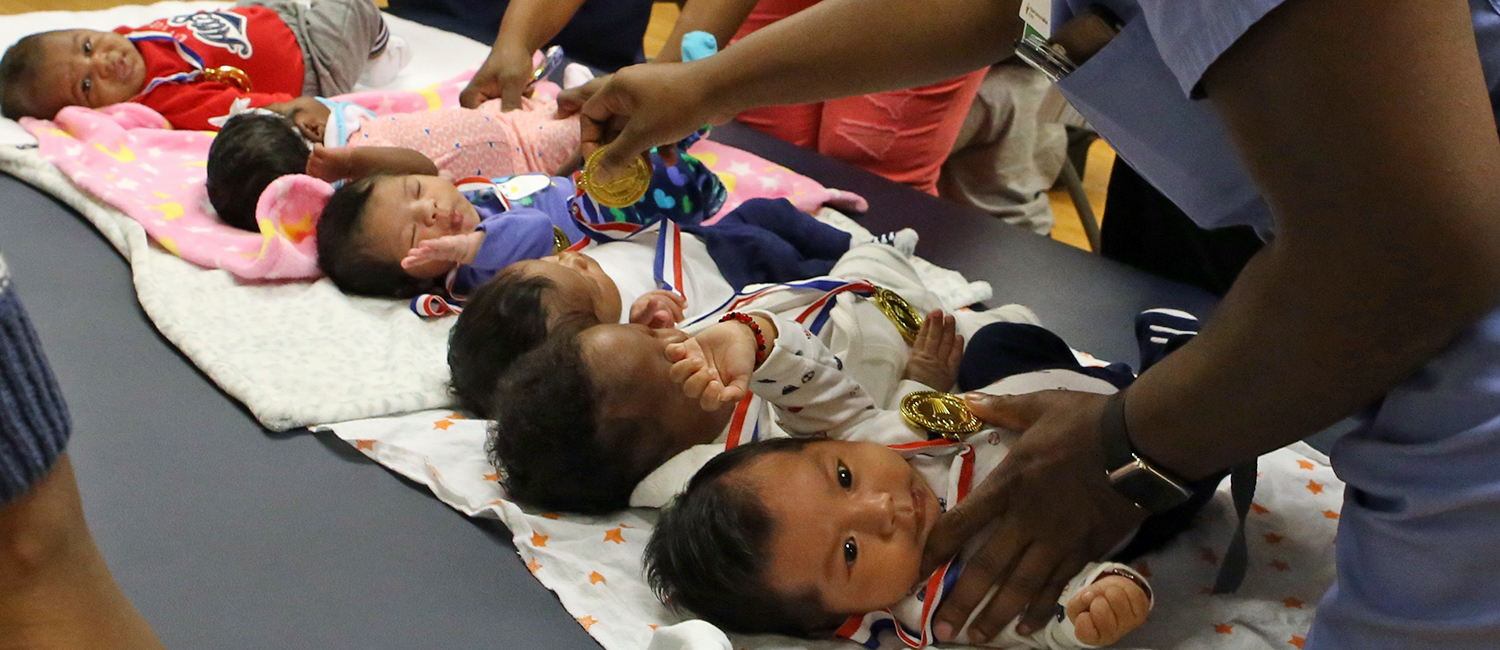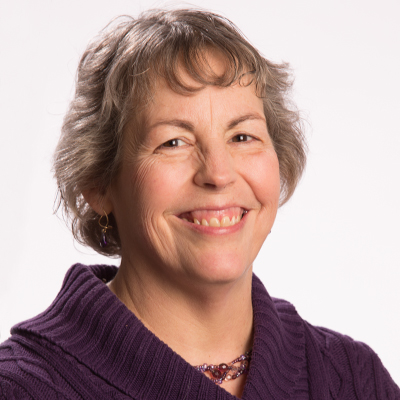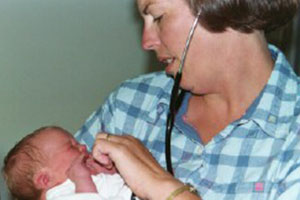
Saving Babies
Nursing professor Teresa Johnson studies a peer support group for expectant mothers that lowers the infant mortality rate.
The numbers are stark. Research shows that black infants across the United States are more than twice as likely as white infants to die in their first year, regardless of their parents’ socioeconomic status.
In Racine, the numbers have been bleaker. Black infants are three times likelier than white babies to die in their first year, according to statistics from 2014, the most recent available. And that’s a big improvement over 2007, when Racine’s black infants died 3.78 times more often than white infants, then the third-worst rate in the country.
To counter those dire statistics, College of Nursing associate professor Teresa Johnson teamed with Margaret Malnory, administrative director of women’s and children’s services at Racine’s Wheaton Franciscan Healthcare-All Saints, part of Ascension. “It’s always been a really strong drive, from the time I began as a staff nurse, to optimize outcomes for our sickest babies,” Johnson says.

She and Malnory were two of the founding partners of the Greater Racine Collaborative for Healthy Birth Outcomes. It develops programs to decrease preterm births and increase breastfeeding rates, two factors shown to help babies reach their first birthdays.
One program, known as CenteringPregnancy, offers group prenatal care to expectant moms. Patients meet for appointments with other moms whose babies are due around the same time. “I call it social hour with prenatal care,” explains Dr. Anya Hartley, an obstetrician at All Saints.
Johnson’s research suggests the program is making a difference. She compared data from women who participated in that CenteringPregnancy program to those who did not, and reported fewer preterm births and more breastfeeding among participants.
Among women in group prenatal care, 5.7 percent gave birth before 37 weeks, compared with a 13.2 percent rate for those who had typical prenatal visits. And 81 percent of the CenteringPregnancy moms were breastfeeding their babies when they left the hospital, compared with the 67 percent rate among non-participating mothers.
Many women are initially uncomfortable with the idea of breastfeeding. But as they learn about its health impact on babies and mothers, including a decreased risk of breast cancer, many decide to try it, Johnson says. Group discussions help normalize the practice.
Searching for answers
Why is infant mortality so high in Racine’s African-American community? The problem is complex, and the causes are difficult to tease apart.
“There’s an impact when you live in a neighborhood where you always know someone who lost a baby in the last year,” Johnson says. “The stress of that grief affects more than the family.”
Previous research suggests that racism contributes to increased stress levels for African-Americans around the country. In Racine, such stress is compounded by poverty and high unemployment rates.
Chronic stress raises a mother’s risk of preterm labor and other obstetric complications. “The fight-or-flight response causes your blood pressure to go up and decreases the blood flow to your vital organs,” Johnson says, “while increasing cortisol and glucose levels.”
If these changes become chronic, they can trigger early labor and premature birth, which are top contributing factors in deaths before age 1.
In their search for solutions in Racine, Johnson and Malnory championed CenteringPregnancy, a program first developed in Boston two decades ago. A March of Dimes grant helped launch the program at All Saints in 2012. Since then, funding has also been provided by the Community-Academic Partnership Fund of the UW School of Medicine and Public Health’s Wisconsin Partnership Program.
CenteringPregnancy groups typically include eight to 12 women and are led by a physician such as Hartley or Dr. Tasha Johnson. The groups mirror the diversity of Racine, featuring a mix of white, African-American and Latina women ranging from teenagers to 40-somethings. Meetings start with quick, private exams for each woman, then move to group education on topics such as nutrition, labor and infant care.
Melissa Allison, 33, joined a CenteringPregnancy group at All Saints before the birth of her third child in 2015. “I thought, ‘Why not be around other pregnant women who are all experiencing the same thing?’” she says. And 40-year-old Anna Huizar, who gave birth to her fourth child in 2016, liked the extra time with her obstetrician. “I could spend two hours with her instead of 15 minutes,” she says.
Peer support
Hartley says the moms encourage each other to make healthy choices, such as exercising more or trying to breastfeed after birth. And friendships are made. Hartley has watched mothers offer each other jobs or places to live.

The camaraderie doesn’t end with the pregnancies. Allison was excited to meet babies from the group, and several moms still get together for outings, sharing their latest baby photos.
This easing of social isolation, Teresa Johnson says, is a main benefit of CenteringPregnancy. “A lot of people are far from their family or do not have family that can provide the support,” she says.
Malnory says she values Johnson’s expertise as both a nurse and researcher, particularly in developing practice guidelines to care for babies in All Saints’ neonatal intensive care unit, or NICU.
Johnson recommended updates in how the NICU tracks the growth of preemies. She also helped initiate the NICU’s encouragement that mothers pump breast milk within hours of delivery. The milk helps protect infants from life-threatening infections.
It’s all geared to save as many lives as possible, because the consequences of infant mortality are far-reaching.
Emily Nowak, one of Johnson’s doctoral students, interviewed mothers whose babies died in their first year and discovered communitywide consequences. “There’s an impact when you live in a neighborhood where you always know someone who lost a baby in the last year,” Johnson says. “The stress of that grief affects more than the family.”